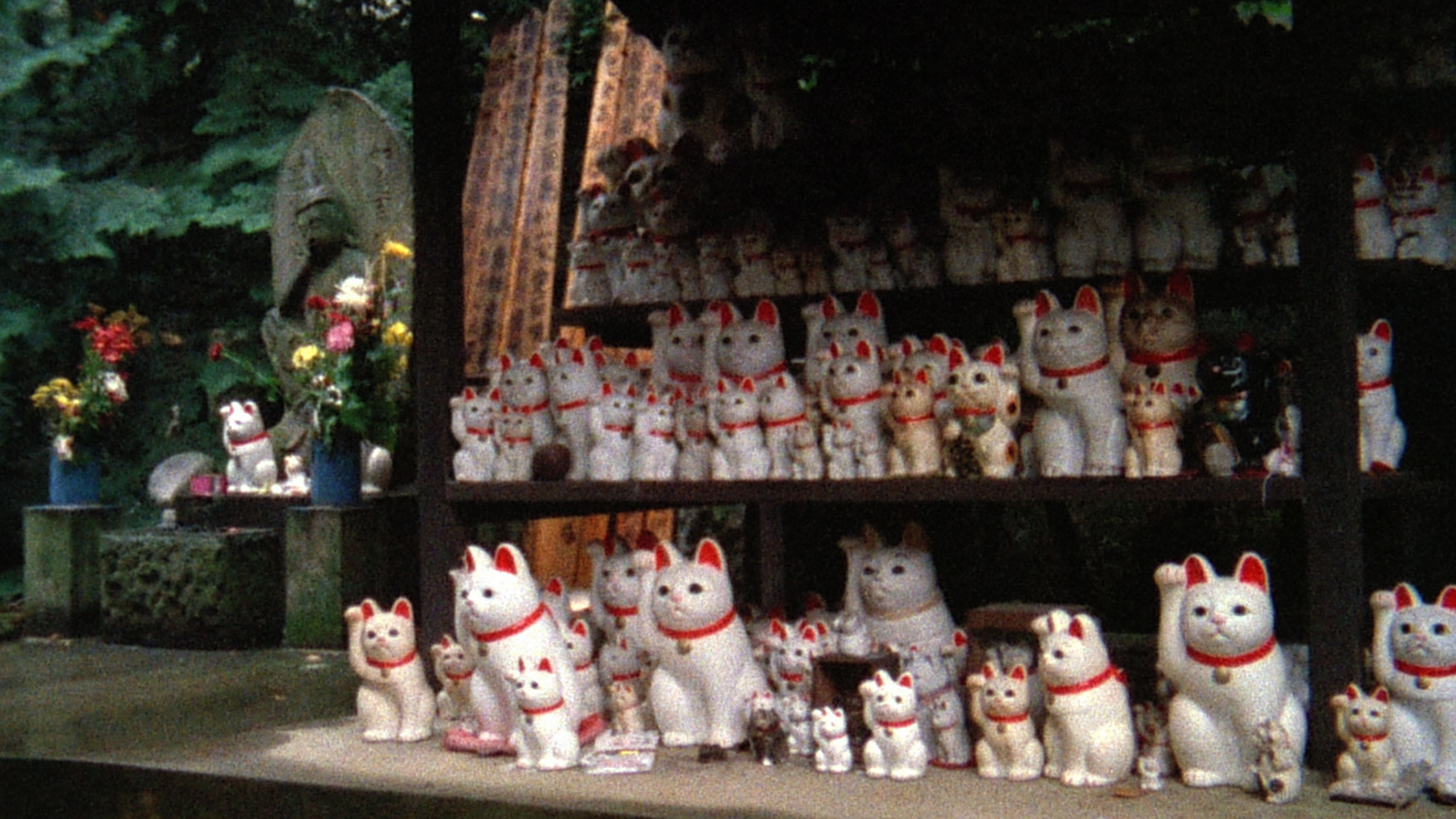
Under the rain, a couple places a wooden slat in the cat cemetery of Gotokuji to protect their runaway cat.
That was the beginning of a memory in Chris Marker’s Sans Soleil (1983).
I watched Sans Soleil in RTVF 313: Art of the Real. The film, a collection of travelogue digressions from Tokyo to Guinea-Bissau connected in an unassailable but reflexive manner, can only be described as dream-like, or as the film’s cryptic voice would call out – an impossible memory.
The film redefined my understanding and love for the medium. Rather than giving an expository lecture, documentary can serve as an artistic canvas that, even in a film as mercurial as Marker's, portrays invariable truths. More than anything, though, I became obsessed with finding these cat figurines. A now-popular icon, these fortune-bringing cats always wave one arm, gesturing for good luck. My parents compared me to one as I was growing up, hoping I could bring good luck to my life and the lives of those around me.
But the story of these feline statuettes traces back to a more distant memory than Marker’s globetrotting or my childhood nickname.
The account is fuzzy, but the most widely-held narrative dates back to the 17th century, when a cat beckoned a feudal lord, who, having returned from falconry, serendipitously found shelter at a temple in the midst of a thunderstorm.
The lord later rebuilt the temple with the Shofuku-den to enshrine the cat and named it maneki-neko, which translates to "beckoning cat."
When Marker visited Tokyo in 1983, he captured dozens of maneki-neko figures with his 16mm Beaulieu silent film camera.
40 years after his visit, I found myself too wandering aimlessly in Tokyo and paid a visit to Gotokuji temple. It hid in a quiet oasis 40 minutes from Shinjuku’s cacophony. I saw hundreds of maneki-neko figures. Under the glaring sunlight, they engulfed the Shofuku-den like sheets of foam. I loaded a roll of Ilford into my camera, hoping to embalm these photos in my memory.
“He liked the fragility of those moments suspended in time. Those memories whose only function had been to leave behind nothing but memories.” - Sans Soleil (1983)
Tora, Tora, Tora was both the code name for Pearl Harbor and the name of the couple’s missing cat.
Produced during the dusk of the Cold War, the film, which Marker refers to as his home movie, juxtaposes disparate images of maneki nekos, sleeping train passengers and dogs playing on the Sahelian beach, with those of violence, political revolutions, bomber planes and the aftermath of a volcanic eruption.
Sans Soleil follows an epistolary narrative: a narrator reads letters of travel written by Sandor Krasna, a fictitious stand-in for Marker himself. The images are accompanying postcards, offering Krasna a moment of respite from a precarious world plagued by war and unchecked capitalist distention.
Images – whether in the form of Lord Li’s figurines, Marker’s film or my photos – become the surrogates for our memories, which beckon auspiciously to us like maneki neko figurines. We look to these images during times of uncertainty, and they in turn embolden us to brace thunderstorms.
“I’ve been around the world several times and now only banality still interests me.” - Sans Soleil (1983)
At the end of his letters, Krasna doesn’t seem to know the cat’s whereabouts. There is no resolution. Only the memory of banality.
He heard a prayer from a woman at Gotokuji: “Cat, wherever you are, peace be with you.”